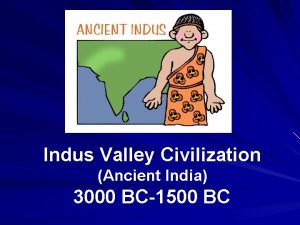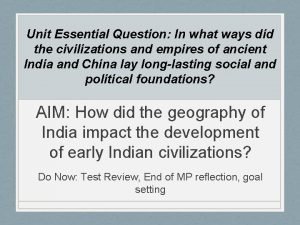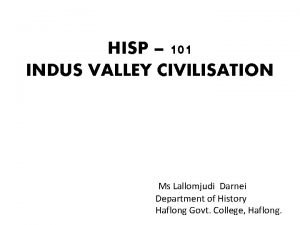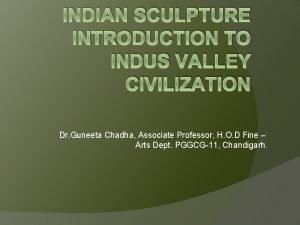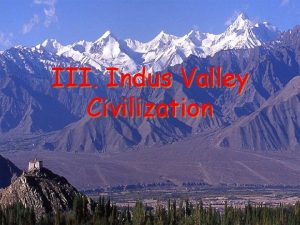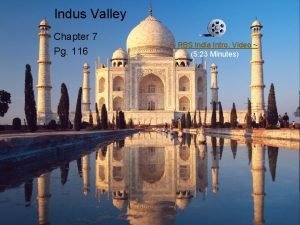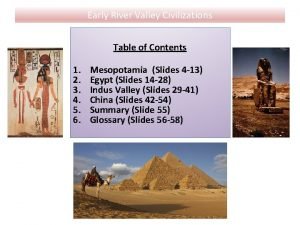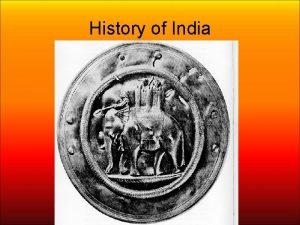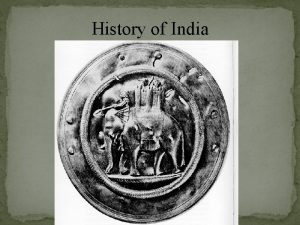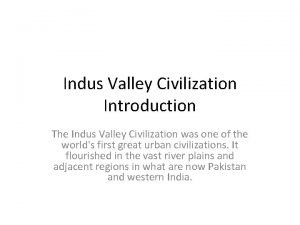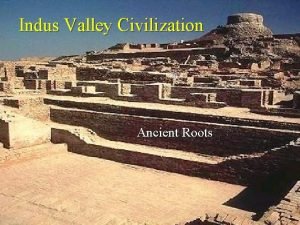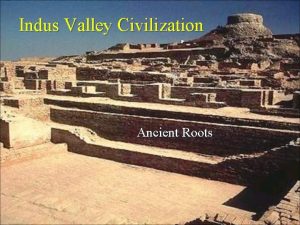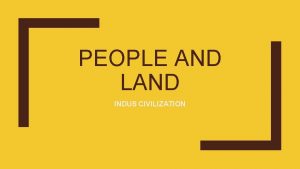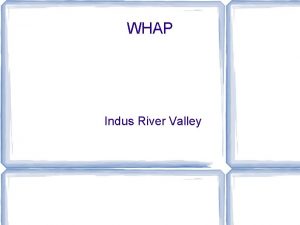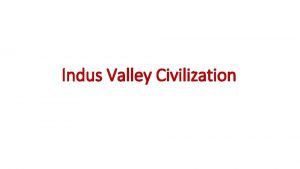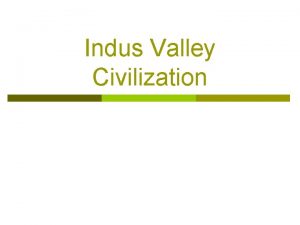The Indus Valley civilization is sometimes referred to












- Slides: 12

The Indus Valley civilization is sometimes referred to as the Harappan civilization because of the first city (Harappa) discovered here in the 1920 s. TODAY’s OBJECTIVES: • Locate the Indus Valley culture and examine the impact of its geography. • List theories about the decline of the Indus Valley civilization. • Describe the social and religious structure of the Shang Dynasty. • Summarize the rise and fall of the Zhou Dynasty in China.

4 early River Valley Civilizations WARM-UP: • Sumerian Civilization - Tigris & Euphrates Rivers (Mesopotamia) • Egyptian Civilization - Nile River • Harappan Civilization - Indus River Can you label the 4 early River Valley Civilizations on • Ancient China - Huang He River your map handout. PP Design of T. Loessin; Akins H. S.

“The Four Early River Valley Civilizations” • Sumerian Civilization - Tigris & Euphrates Rivers (Mesopotamia) • Egypt (Nile River) • Harappan Civilization - Indus River The ruins of Mohenjo-Daro; Indus Valley

Geography • A wall of mountains- the Hindu Kush, Karakoram, and Himalaya rangesseparate South Asia from the rest of the continent • Mountains guard a flat and fertile plain formed by two rivers – The Indus and the Ganges • Monsoons- seasonal winds that dominate India’s climate – Oct to May: blow dry air – June: winds shift carrying moisture from the ocean

• Yearly floods spread deposits of rich soil • Floods were unpredictable • River sometimes changed its course • People had to cope with the cycle of wet and dry seasons • Natural barriers: World’s tallest mountains (north) and a large desert (west) – Protection from invasions • Indus River connected to the sea= development of trade

Civilization Emerges • Soil attracted farmers, who built villages, and in time cities • Extensive floodplain aloud for Indus civilization to spread over a larger area then Mesopotamia or Egypt • Little is known about the Indus Valley as historians have NOT deciphered their system of writing

• Planned Cities • Indus civilization was home to around 100 villages and several walled cities • 2 largest cities: Harappa and Mohenjo-Daro – Consisted of two sections: elevated citadel & lower residential area – Surrounded by walls – Orderly streets & houses built on planned grid system – Sophisticated plumbing/sewage system

Culture and Trade • Government = a strong central government ruled by kings • Few weapons of warfare have been found suggesting limited conflict • Stamps/seals used to identify goods – Conducted long distance trade (stamps found in Sumer & Sumerian objects found in Indus Valley) Coin with Brahmi script, Stamp seal from Mohenjo-Daro Stamp seal depicting a rhinoceros from Mohenjo-Daro


Religion • Artifacts reveal links to modern Hindu culture (polytheistic) • Figures show early representation of the god Shiva • Other figures relate to a mother goddess, fertility figures, and worship of cattle

What happened to the Harappan civilization on the Indus River? Above: The Great Bath at Mohenjo-Daro. Surrounding pics: various Harappan artifacts. PP Design of T. Loessin; Akins H. S.

Mysterious End • Around 1750 b. c. quality of building in the cities declined • Cities fell into decay and the civilization ended around 1500 b. c. • What happened? ? ? – Indus River changed course so floods no longer fertilized the fields – Sudden catastrophe/attack – People wore out the valley’s land • Overgrazed/over farmed/ over cut land
 The aryan caste system
The aryan caste system Harappan civilization in india map
Harappan civilization in india map Conclusion of harappan civilization
Conclusion of harappan civilization Introduction about indus valley civilization
Introduction about indus valley civilization Indus valley game
Indus valley game Harappan civilization economy
Harappan civilization economy Vedic caste system
Vedic caste system Conclusion of indus valley civilization
Conclusion of indus valley civilization Ancient india natural resources
Ancient india natural resources Mesopotamia technology
Mesopotamia technology Indus valley civilization medicine
Indus valley civilization medicine Economy of indus valley civilization
Economy of indus valley civilization Indus valley civilization trade and economy
Indus valley civilization trade and economy
